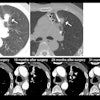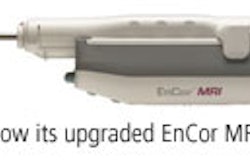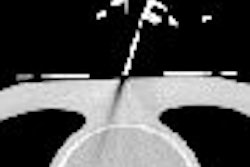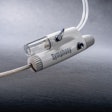Incomplete tumor infarction is the main reason that some patients undergo uterine artery embolization (UAE) a second time, according to a study that looked at the indications and technical reasons for another UAE procedure. In addition, many of these "repeat customers" will require ovarian artery embolization (OAE) as well.
"The symptoms that occur at the time of recurrence are typical of those experienced with fibroid tumors, although symptoms at the time of recurrence in any individual may or may not be the same as those at the initial procedure," wrote Dr. James Spies and colleagues in the Journal of Vascular and Interventional Radiology (December 2006, Vol. 17:12, pp. 1923-1929).
But data on why recurrence occurs and how it can be treated is scant, added Spies' group, which is from Georgetown University Hospital in Washington, DC.
The study included data from 25 patients who underwent repeat angiography and embolization. The criteria for repeat UAE included symptomatic viable fibroid tumors, persistent pelvic pain, and menorrhagia. Follow-up MRI was done three months after the initial procedure, and again three months after the second procedure.
Of the 25 women (average age of 43.9), 24 had repeat UAE (one patient had angiography, then opted for hysterectomy). The average interval between the procedures was 37 months. Of the 21 patients with two MR studies between procedures, 10 had an increase in uterine volume, 10 had a decrease, and one had unchanged volume.
"In nearly all cases of incomplete infarction, MR imaging demonstrated an increase in the extent of viable tissue in incompletely treated tumors," the group wrote.
During the second procedure, 15 patients had two patent uterine arteries and were treated with bilateral UAE. Sixteen patients showed some degree of ovarian supply to the uterus, and nine of them had unilateral or bilateral OAE.
"Nearly 40% of patients required supplemental OAE in addition (to repeat UAE)," the authors wrote. "This is clearly an important issue to consider with the patient before a repeat procedure is undertaken, because the impact of OAE on ovarian function is still not known."
However, the results of this study strongly indicated that incomplete infarction was the underlying case for tumor presence after the first round of UAE, they stated. The authors also acknowledged that the small number of patients was a drawback to this research.
But looking at the bigger picture, they noted that their study, and the UAE field in general, lacks a standard classification system for fibroids that would delineate the size, location, and number of tumors.
This type of information could help interventionalists predict which patients are more likely to experience recurrence and/or require additional treatment, they stated.
By Shalmali Pal
AuntMinnie.com staff writer
January 23, 2007
Related Reading
UFE gains ground with patients, physicians, November 10, 2006
UAE with PVA microspheres yields sustained symptom improvement, September 18, 2006
SIR studies: UFE outcomes hold up over long term, April 3, 2006
Copyright © 2007 AuntMinnie.com



















